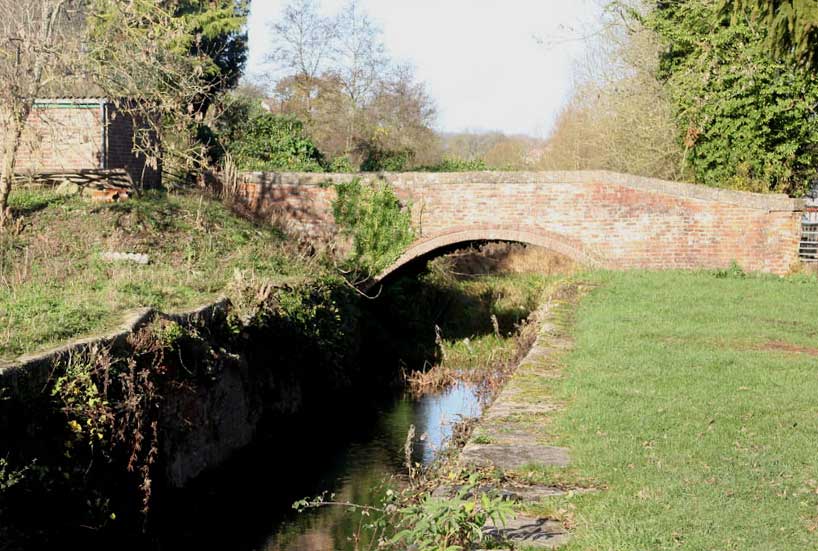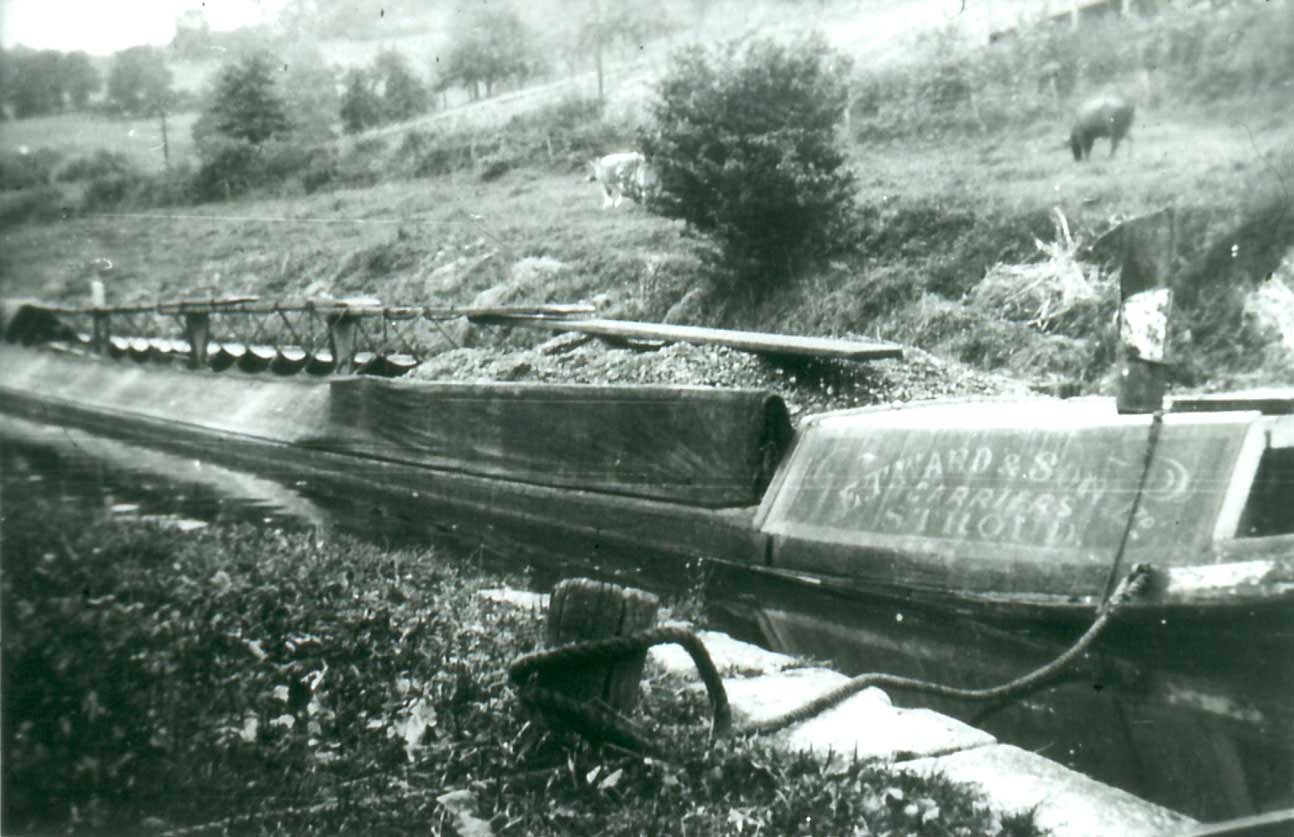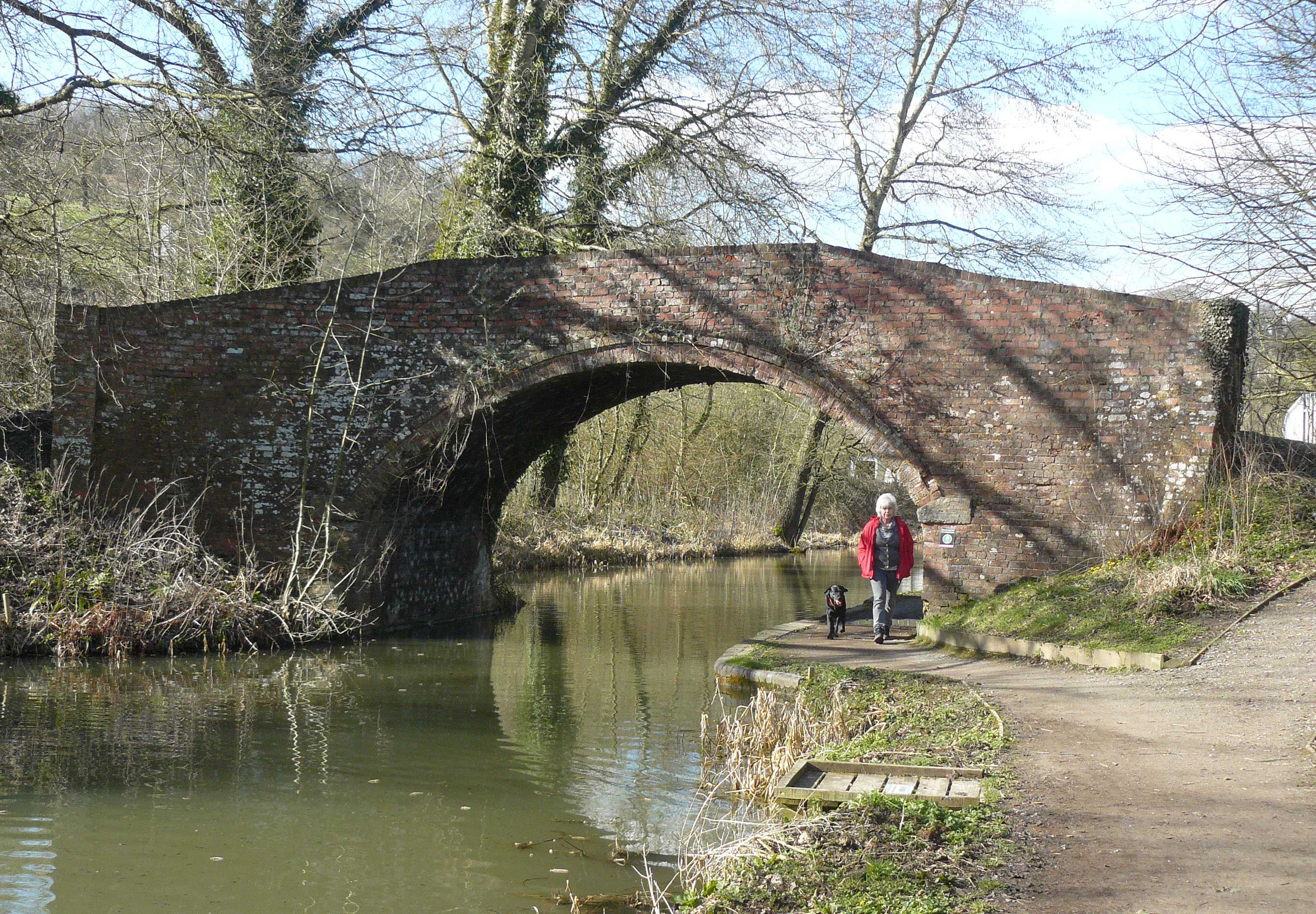Along this part of the Frome valley, each canal bridge carried an ancient track across the valley that was once used by workers accessing the local cloth mill. This section of the canal was closed in 1933 and was restored between 2011 and 2018.


This lock raises the canal up the east side of the valley, lifting the towpath well above the nearby Ham Mill. This mill produced woollen cloth until 1900, then carpets, and continued spinning wool until 2000.
The house south-west of the bridge was built for the man who looked after the nearby railway crossing and halt used by a railcar running an hourly service between Gloucester and Chalford.
During restoration by volunteers, the walls of the path under the bridge were decorated with miniature grotesque faces, challenging visitors to count how many. A plaque marks an award from the Council for the Protection of Rural England for the outstanding work done by the restoration volunteers.


Much coal was delivered to the mill until this last load in 1933, shortly before the canal was formally closed to traffic. Coal boats were moored close to the shelving bank just above the lock, and two men used a hand barrow to carry the coal over a plank to the towpath on its way down to the mill.
Back in 1840, materials had to be brought up from the mill to be taken away by boat after a massive fire devastated the building. To assist the mill owner, the T&S Company allowed him to remove up to 100 tons free of toll.


This classic canal bridge carried a minor track across the valley linking Bagpath hamlet on the west with the former Phoenix Foundry on the east.
The foundry primarily produced industrial products, such as waterwheels and textile machinery. It was also where the world’s first lawn mower was invented in 1830, derived from machines used for shearing the nap of woollen cloth. These were sent away by boat to customers around the country.
Stroud Brewery now occupies part of the former foundry estate south of the bridge, and two big tappet wheels for fulling stocks (found under their car park) are now set up on the canal bank opposite the brewery.
History of local industries from www.british-history.ac.uk/vch/glos/vol11/pp119-132.
Removal of Ham Mill debris free of toll from TS/165a 31 Mar 1840.


Close-up of one of the miniature grotesque faces decorating the walls of the path under Ham Mill Bridge.